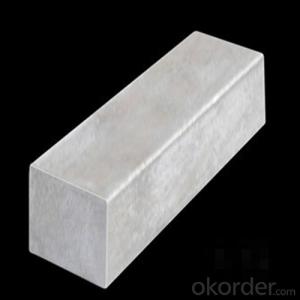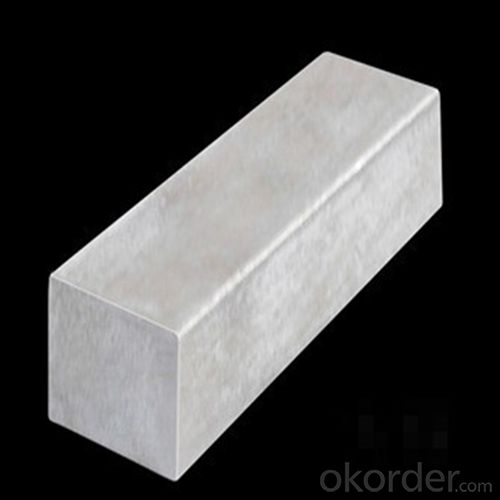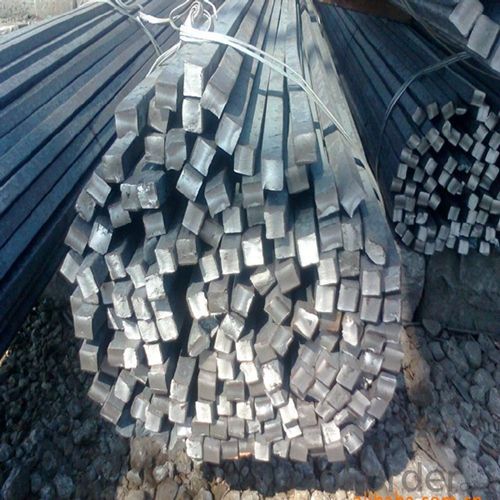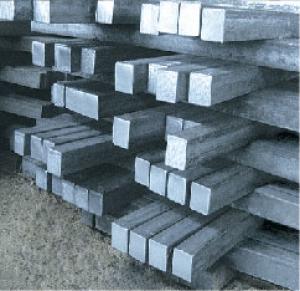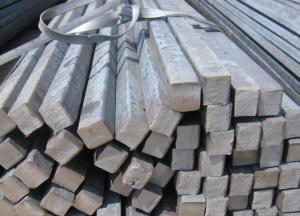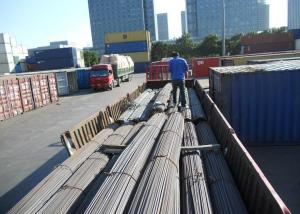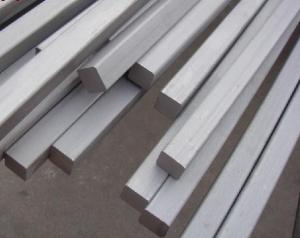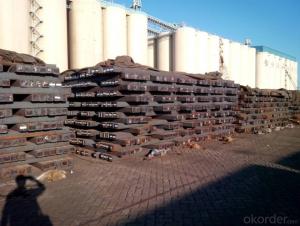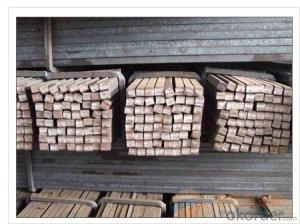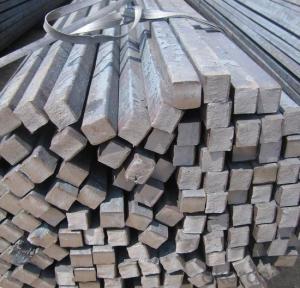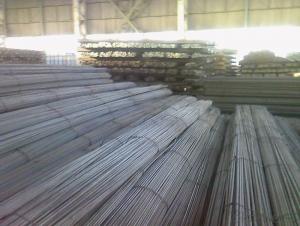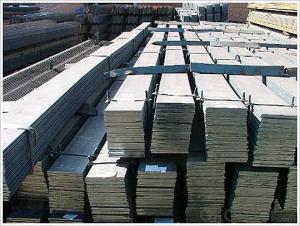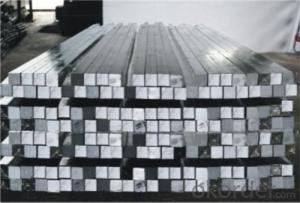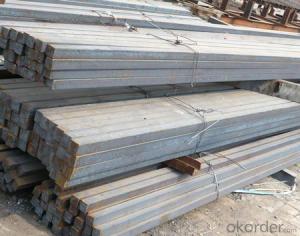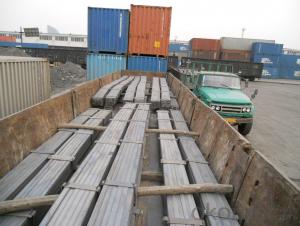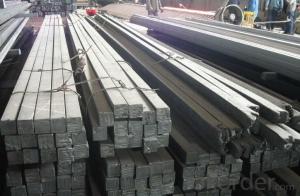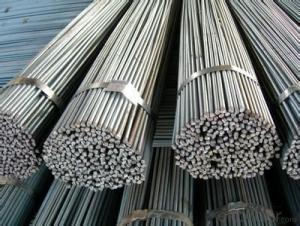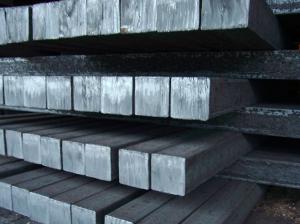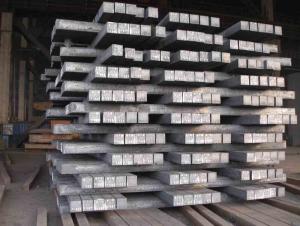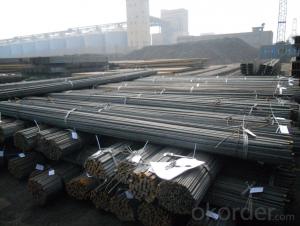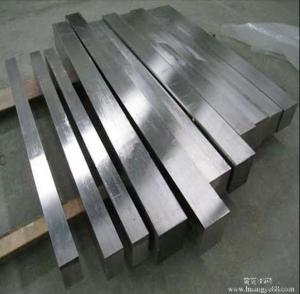Carbon Steel Square Straight Bars with Sizes 10MM to 25MM High Quality
- Loading Port:
- Tianjin
- Payment Terms:
- TT OR LC
- Min Order Qty:
- 25 m.t.
- Supply Capability:
- 1000 m.t./month
OKorder Service Pledge
OKorder Financial Service
You Might Also Like
1. Structure of Carbon Steel Square Straight Bars with Sizes 10MM to 25MM Description:
Carbon steel square straight bars with sizes 10mm to 25mm is a bar with square shaped cross-section. It is special case of equal sides. Before steel products are sold on the market, the steel must first be processed into more functional pieces. Raw steel cannot be of use while in its pure form, thus it has to be cast into shape. The freshly made steel, carbon steel square straight bars with sizes 10mm to 25mm is still in the form of a metal bar or rectangle. Small sizes of carbon steel square straight bars with sizes 10mm to 25mm are used in ship building.
2. Main Features of Carbon Steel Square Straight Bars with Sizes 10MM to 25MM:
• Grade: Q235
• Type: Mild carbon steel
• A quadrilateral with four equal sides and four right angles.
• Vibration: The stiffness and mass are chosen to prevent unacceptable vibrations, particularly in settings sensitive to vibrations, such as offices and libraries.
• Local yield: Caused by concentrated loads, such as at the beam's point of support.
3. Carbon Steel Square Straight Bars with Sizes 10MM to 25MM Images:
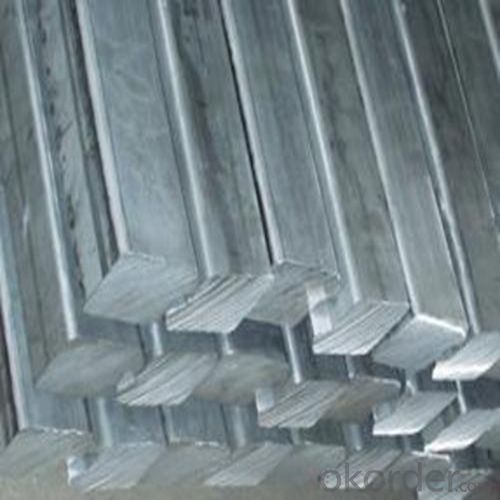
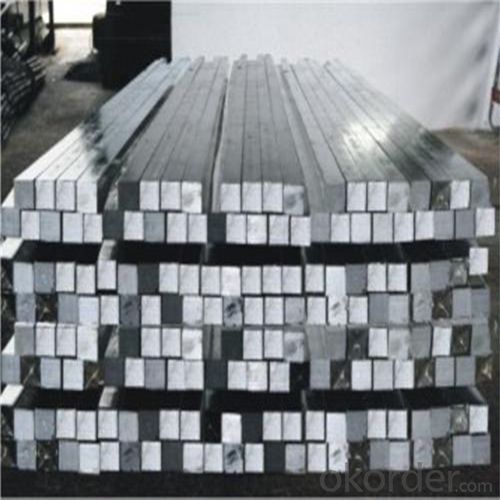
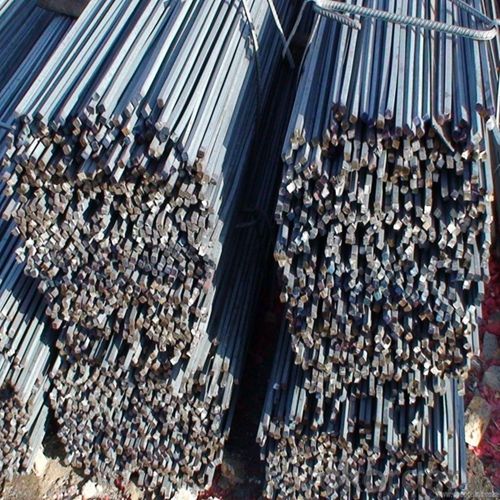
4. Carbon Steel Square Straight Bars with Sizes 10MM to 25MM Specification:
Mechanical Properties | Grade | Steel diameter(mm) | |||
≤16 | 16~40 | 40~60 | 60~100 | ||
Yield Point Δs/MPa | Q195 | ≥195 | ≥185 | - | - |
Q235 | 235 | 225 | 215 | 205 | |
Tensile Strength | Q195 | 315~390 | |||
Q235 | 375~500 | ||||
Elongation δ5% | Q195 | ≥33 | ≥32 | - | - |
Q235 | 26 | 25 | 24 | 23 | |
5. FAQ
We have organized several common questions for our clients,may help you sincerely:
①What is the main material?
There are two types of Square Bar, one is hot rolled square bar and other one is cold drawn square bar. Our principal products is hot rolled square bar. We dedicate to products with material Q195 and Q235. We offer products with high quality and low price.
②How to inspect the quality?
We have a professional inspection group which belongs to our company. We resolutely put an end to unqualified products flowing into the market. At the same time, we will provide necessary follow-up service assurance.
③Is there any advantage about this kind of product?
Steel I beam bar IPE has a reduced capacity in the transverse direction, and is also inefficient in carrying torsion, for which hollow structural sections are often preferred.
- Q: How do you use a steel square to measure and lay out a miter joint?
- To use a steel square to measure and lay out a miter joint, start by placing the square against the edge of the material and aligning the inside corner of the square with the edge. Then, mark a line along the outside edge of the square to indicate the desired angle of the miter joint. Repeat this process on the other piece of material that will be joined to ensure both angles match. Finally, cut along the marked lines to create the miter joint, ensuring a precise and snug fit.
- Q: Can a steel square be used for checking the flatness of a wall stud?
- Using a steel square for examining the flatness of a wall stud is not possible. A steel square serves as a measuring tool mainly utilized for marking and measuring right angles. It is not intended to evaluate the evenness or straightness of a surface. To assess the flatness of a wall stud, a straightedge or level must be employed. These instruments offer a higher level of precision and can identify any abnormalities or deviations in the surface.
- Q: Can a steel square be used for checking the squareness of cabinet frames?
- Checking the squareness of cabinet frames can be done using a steel square. Commonly referred to as a framing square or carpenter's square, a steel square is a versatile tool extensively used in woodworking and construction. With its 90-degree angle, it guarantees the perfect squareness of corners and edges. Determining if a cabinet frame is square or requires adjustments becomes effortless by positioning the steel square against its corners. Furthermore, the straight edges of the square enable the verification of shelf alignment, door alignment, and other cabinet components. In conclusion, a steel square is an invaluable tool for ensuring the precision and excellence of cabinet frames.
- Q: How do you use a steel square to determine board footage?
- To use a steel square to determine board footage, you will need to follow a few simple steps. First, measure the width of the board using the shorter arm of the steel square. Place the square against the edge of the board and align the shorter arm with the width of the board. Take note of the measurement marked on the longer arm of the square where it intersects with the edge of the board. Next, measure the length of the board using the longer arm of the steel square. Place the square against one end of the board and align the longer arm with the length of the board. Again, take note of the measurement marked on the shorter arm of the square where it intersects with the end of the board. Multiply the width and length measurements together to calculate the square footage of the board. For example, if the width is 6 inches and the length is 8 feet, the calculation would be 6 inches multiplied by 8 feet, resulting in 48 square feet. To determine the board footage, which represents the volume of the board, divide the square footage by 12 (since there are 12 inches in a foot) and round to the nearest whole number. In the previous example, dividing 48 square feet by 12 would give a board footage of 4. Using a steel square to determine board footage is a straightforward process that can be easily accomplished with accurate measurements and basic multiplication and division calculations.
- Q: What are the common materials used to make a steel square?
- The common materials used to make a steel square are typically stainless steel, carbon steel, or tool steel. These materials are chosen for their strength, durability, and resistance to corrosion. Stainless steel is often preferred as it offers excellent resistance to rust and staining, making it ideal for outdoor use or in humid environments. Carbon steel is another commonly used material for steel squares due to its affordability and high tensile strength. Tool steel, which is a high-carbon alloy steel, is often used in specialized squares designed for precision measurements and heavy-duty applications. Overall, the choice of material depends on the intended use and the specific requirements of the steel square.
- Q: How do you use a steel square to measure and mark 185.625-degree angles?
- To measure and mark a 185.625-degree angle using a steel square, you would need to follow a few steps. First, locate the 90-degree angle on the steel square, which is formed by the long side (blade) and the short side (tongue). This angle is typically marked with a right angle symbol (90°). Next, align the blade of the steel square with one of the sides of the angle you want to measure. Ensure that the tongue is perpendicular to the blade and extends in the opposite direction. Now, rotate the steel square until the edge of the tongue intersects with the other side of the desired angle. Make sure the blade remains aligned with the first side. At this point, you can observe the measurement on the tongue of the steel square. However, since a steel square typically does not have markings beyond 90 degrees, you may need to use a protractor or another tool with smaller increments to determine the exact measurement of 185.625 degrees. Once you have determined the correct angle, you can use a pencil or another marking tool to mark it on your workpiece. Be cautious and ensure the square remains steady during the marking process to avoid any inaccuracies.
- Q: Can a steel square be used for measuring the width of a window frame?
- Yes, a steel square can be used for measuring the width of a window frame. A steel square, also known as a framing square, is a versatile tool commonly used by carpenters and woodworkers for various measuring and marking tasks. It consists of a long blade and a shorter tongue, forming a right angle. The blade of the steel square can be aligned with the inner sides of the window frame, while the tongue can be extended to measure the width accurately. The steel square is durable and provides a straight edge for precise measurements, making it suitable for measuring the width of a window frame.
- Q: How do you use a steel square to mark out 60-degree angles?
- To use a steel square to mark out 60-degree angles, you need to align one of the edges of the square with the line you want to mark the angle on. Then, place a ruler or straight edge along the other edge of the square, making sure it intersects with the line. Finally, draw a line along the ruler or straight edge to mark the 60-degree angle.
- Q: Can a steel square be used for creating dado joints?
- Yes, a steel square can be used for creating dado joints. A steel square is a versatile tool that can be used for measuring and marking precise angles and lines, which are essential for creating accurate dado joints.
- Q: Can a steel square be used for deck construction?
- Deck construction can indeed utilize a steel square. These tools, referred to as framing squares or rafter squares, possess great versatility and find common usage among carpenters engaged in construction endeavors, including deck building. Typically constructed from steel, they are equipped with markings and measurements that aid in layout and angle calculations. Steel squares serve various purposes, such as measuring and marking cuts, verifying squareness, and outlining the framing elements of a deck, such as beams, posts, and joists. Given their durability and ability to provide precise measurements, they constitute a fitting choice for deck construction.
Send your message to us
Carbon Steel Square Straight Bars with Sizes 10MM to 25MM High Quality
- Loading Port:
- Tianjin
- Payment Terms:
- TT OR LC
- Min Order Qty:
- 25 m.t.
- Supply Capability:
- 1000 m.t./month
OKorder Service Pledge
OKorder Financial Service
Similar products
Hot products
Hot Searches
Related keywords
